Radhe-Krishna Black
Product Details:
- Finishing Polishing
- Style Religious
- Product Type Statues
- Plastic Type Resin
- Height 5 Centimeter (cm)
- Theme Hinduism
- Feature Eco-Friendly Durable
- Click to View more
Radhe-Krishna Black Price And Quantity
- 1 Piece
- 1999 INR/Piece
Radhe-Krishna Black Product Specifications
- 5 Centimeter (cm)
- Eco-Friendly Durable
- Indian
- Hinduism
- 5 Centimeter (cm)
- Statues
- Resin
- Religious
- Polishing
Radhe-Krishna Black Trade Information
- 10 Piece Per Day
- 1 Days
Product Description
The Radha-Krishna statue is a depiction of the Hindu divine couple, Radha and Krishna, who are revered in Hinduism as symbols of love, devotion, and divine union. Radha is considered the embodiment of devotion (bhakti) to Krishna, who is seen as the supreme God in Hinduism, particularly within the Vaishnavism tradition.
The Radha-Krishna statue is a depiction of the Hindu divine couple, Radha and Krishna, who are revered in Hinduism as symbols of love, devotion, and divine union. Radha is considered the embodiment of devotion (bhakti) to Krishna, who is seen as the supreme God in Hinduism, particularly within the Vaishnavism tradition.
These statues typically depict Radha and Krishna standing or sitting together, often in an affectionate pose. Krishna is usually depicted with blue skin, holding a flute, and wearing traditional garments, while Radha is depicted as a beautiful woman, often adorned with jewelry.
The Radha-Krishna relationship is celebrated in Hindu mythology and literature as the epitome of divine love and devotion. Their love story, often portrayed through various mythological narratives, serves as an allegory for the souls longing for union with the divine.
Radha-Krishna statues are popular in Hindu households, temples, and spiritual spaces, where they serve as objects of worship and devotion. They are also frequently seen in Hindu art, paintings, and sculptures, depicting different aspects of their divine love and transcendental pastimes.
The presence of a Radha-Krishna statue is believed to inspire love, devotion, and spiritual aspiration among devotees, fostering a deeper connection to the divine and reminding worshippers of the eternal bond between the individual soul (jiva) and the supreme soul (Paramatma).The Radha-Krishna statue is a depiction of the Hindu divine couple, Radha and Krishna, who are revered in Hinduism as symbols of love, devotion, and divine union. Radha is considered the embodiment of devotion (bhakti) to Krishna, who is seen as the supreme God in Hinduism, particularly within the Vaishnavism tradition.
These statues typically depict Radha and Krishna standing or sitting together, often in an affectionate pose. Krishna is usually depicted with blue skin, holding a flute, and wearing traditional garments, while Radha is depicted as a beautiful woman, often adorned with jewelry.
The Radha-Krishna relationship is celebrated in Hindu mythology and literature as the epitome of divine love and devotion. Their love story, often portrayed through various mythological narratives, serves as an allegory for the souls longing for union with the divine.
Radha-Krishna statues are popular in Hindu households, temples, and spiritual spaces, where they serve as objects of worship and devotion. They are also frequently seen in Hindu art, paintings, and sculptures, depicting different aspects of their divine love and transcendental pastimes.
The presence of a Radha-Krishna statue is believed to inspire love, devotion, and spiritual aspiration among devotees, fostering a deeper connection to the divine and reminding worshippers of the eternal bond between the individual soul (jiva) and the supreme soul (Paramatma).The Radha-Krishna relationship is celebrated in Hindu mythology and literature as the epitome of divine love and devotion. Their love story, often portrayed through various mythological narratives, serves as an allegory for the souls longing for union with the divine.
Radha-Krishna statues are popular in Hindu households, temples, and spiritual spaces, where they serve as objects of worship and devotion. They are also frequently seen in Hindu art, paintings, and sculptures, depicting different aspects of their divine love and transcendental pastimes.
The presence of a Radha-Krishna statue is believed to inspire love, devotion, and spiritual aspiration among devotees, fostering a deeper connection to the divine and reminding worshippers of the eternal bond between the individual soul (jiva) and the supreme soul (Paramatma).
A Radha Krishna statue typically depicts the Hindu deity couple Radha and Krishna, who are revered in Hinduism as the embodiment of divine love and devotion. Heres some information about Radha and Krishna and their significance:
-
Radha and Krishna: Radha is considered to be the eternal consort and devotee of Lord Krishna. Their love story is a central theme in Hindu mythology and is often portrayed through various poems, songs, and artistic depictions. Krishna, an incarnation of Lord Vishnu, is revered as a divine figure known for his mischievous antics as a child, his role as a cowherd, and his teachings in the Bhagavad Gita.
-
Symbolism of Love: Radha and Krishnas relationship symbolizes the purest form of love and devotion between a devotee and the divine. Their union is seen as the ultimate expression of spiritual and divine love.
-
Statue Representations: Radha Krishna statues come in various forms and poses, depicting the divine couple engaged in acts of love, dance, or devotion. They are often depicted standing together, with Krishna playing the flute and Radha beside him, or engaged in the Raslila dance, a celestial dance of love.
These statues are popular among devotees and art enthusiasts alike, and they can be found in temples, homes, and spiritual spaces. They serve as a reminder of the divine love between Radha and Krishna and inspire devotees in their own spiritual journey.
FAQs of Radhe-Krishna Black:
Q: What is the material used to make Radhe-Krishna Black?
A: The product is made of resin.Q: What is the size of Radhe-Krishna Black?
A: The length and height of the product are 5 centimeters each.Q: What is the theme of Radhe-Krishna Black?
A: The product has a pot theme.Q: Which regional style does Radhe-Krishna Black belong to?
A: The product belongs to Indian regional style.Q: Is Radhe-Krishna Black made of plastic?
A: Yes, the product is made of resin, which is a type of plastic.
Price:
- 50
- 100
- 200
- 250
- 500
- 1000+

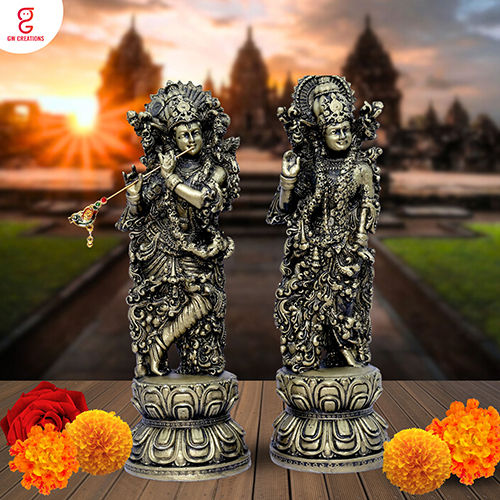
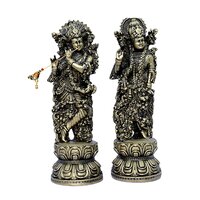
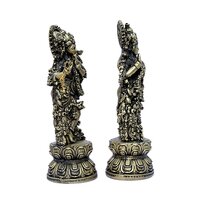
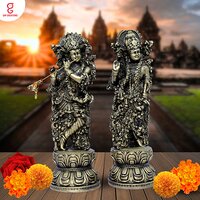
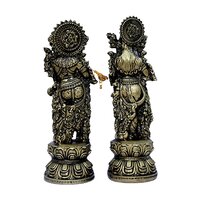
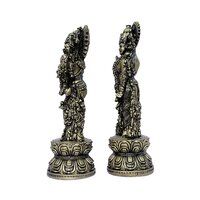






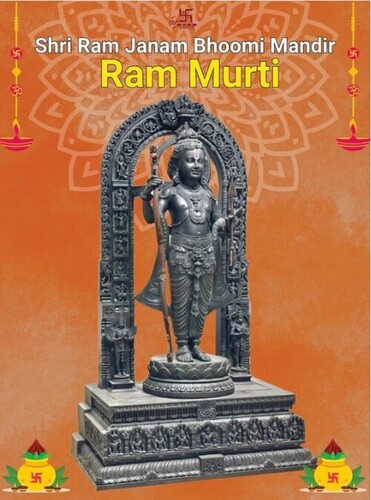
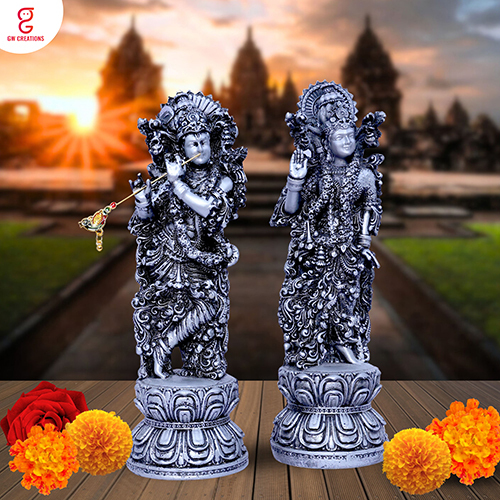
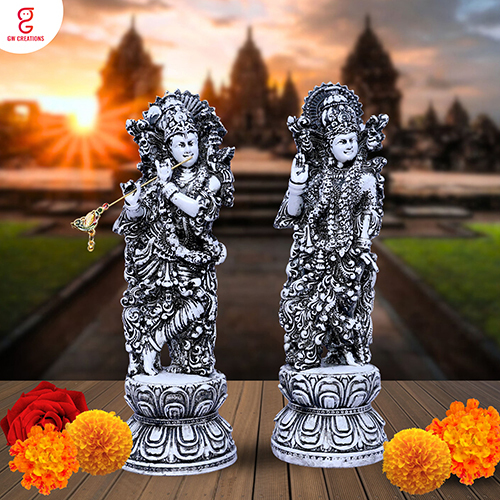
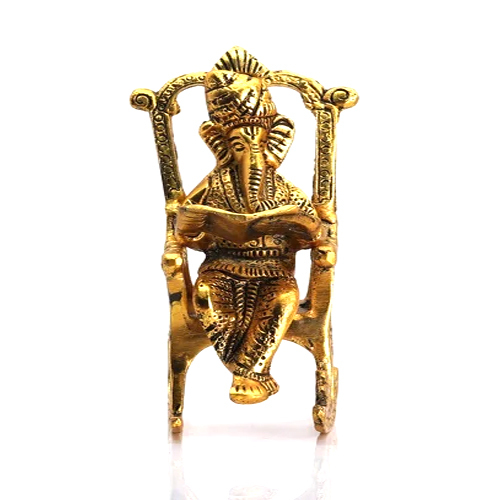


 Send Inquiry
Send Inquiry Send SMS
Send SMS Call Me Free
Call Me Free
